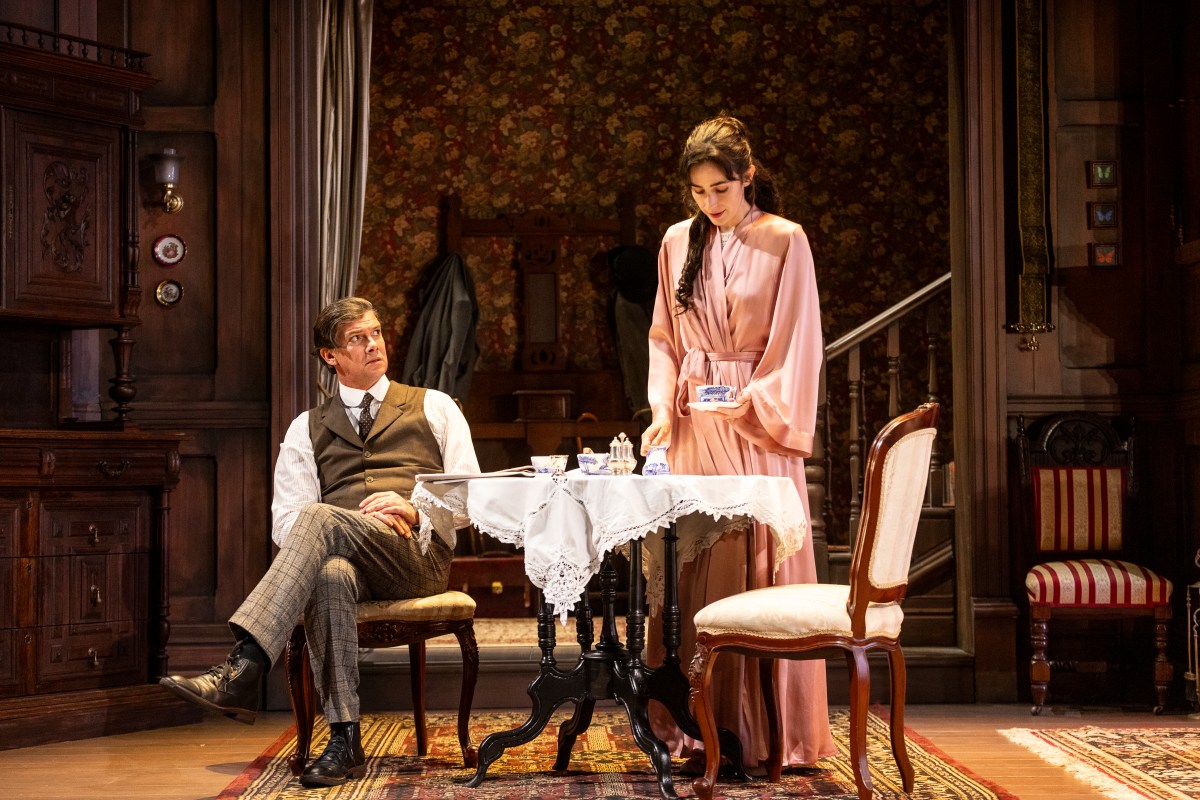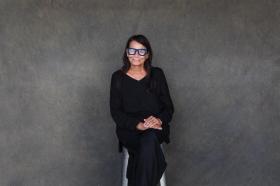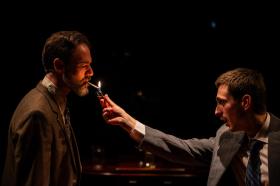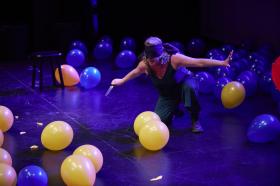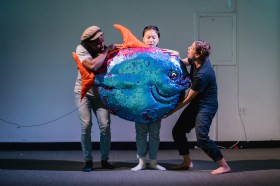Patrick Hamilton’s 1938 psychological mystery play, Gaslight, has been famously adapted for stage and screen since the 1930s. This latest version, the Australian premiere of a seven-city tour by commercial producer, Newtheatricals, has opened in Brisbane as the first production of Queensland Theatre’s 2024 season.
Adapted by Canadian writers, Johnna Wright and Patty Jamieson, this version reduces the original three-act play into two succinct acts. It also removes one of the principal characters, allowing the central female character of Bella to demonstrate her own wit and ingenuity in solving the “gaslighting” problems of the title. Wright and Jamieson’s updating has given more credence to the work for a contemporary audience with its #MeToo generation affinity, though the period piece still remains firmly set in the early 20th century.
The concept of gaslighting is defined as ‘psychologically manipulating another person into doubting their own perceptions, experiences or understanding of events’. It is what we perceive to be happening in the upper middle-class Victorian English house during the opening scenes of the play. We learn that Bella, the mistress of the house, appears to be mentally unstable. Apparently, she hides paintings, loses a precious necklace and is found with a stolen gold bracelet in her bag at a party, remembering nothing of her involvement in these events. She is recently married to Jack, who feigns care for her welfare, but is clearly not who he appears to be. He mysteriously disappears in the evenings. Whenever he is gone, the gaslighting in the house dims and she hears strange noises. Bella begins to doubt her own sanity and health and Jack, we learn in due course, encourages this for his own ends.
There are only four actors in the cast and they are all splendid in their respective roles, though one might have wished that the home county accents of the main couple were not supplemented by regional Yorkshire and Cockney accents respectively for their two servants, Elizabeth and Nancy. This just perpetuates the erroneous view of the English class system, where regional accents denote inferiority.
As Bella, Geraldine Hakewill gives an absolutely tour de force performance. She is superb as the young wife, wanting to do her best by and for her husband, hanging on his every word and trusting him implicitly, until she learns some hard-earned truths. She is alternately upbeat when feeling in control of her life and then fragile and frightened when she doubts herself. She manages the change in her hardening demeanour extremely well, given that her rapid character transformation is rather far-fetched. But she is at her absolute best in the denouement of the play.
Toby Schmitz’s Jack is deftly and cleverly played throughout, with a finely crafted multilayered character. He manages to draw a fine line between the authoritative, misogynistic Victorian man who is condescending to his wife, with bouts of pretence at being solicitous and the perfect caring husband. One notes something distinctly unsavoury about him from his first entry, oozing a sly charm and obsequiousness that makes him instantly unlikeable. His final scene offers all of his chameleon characteristics, as well as some truth-rending anguish. An all-round terrific performance.
The housekeeper, Elizabeth, is beautifully played by Kate Fitzpatrick as a long-suffering, hard-bitten servant, who has seen everything and is haunted by the murder of the previous owner of the house. Knowing her place but being keenly observant, she gives a first-rate, totally believable performance. As Nancy, Courtney Cavallaro is a suitably cocky, obnoxious young woman, who would clearly never have been employed as a maid, drawing attention to why she was engaged by Jack. Cavallaro gives her a leering swagger and she is suitably unpleasant, though her Cockney accent is often difficult to understand.
Director Lee Lewis has firm control over the production and the detailed nuances and foibles of her characters, bringing out both the humour and drama. The action though, is very slow, partly due to the narrative of the play itself, which is old-fashioned and repetitive in style, but also partly because we are never in any doubt as to what the outcome will be. Neither a conventional murder mystery nor a Gothic thriller, Gaslight could have moved more swiftly and would benefit from some judicious cuts.
Set and costume designer, Renée Mulder gives us a dark, cluttered Victorian drawing room, set on an angle with a staircase and a curtained bay window with a tantalising unseen vista of the world outside. Claustrophobic and inward-looking, the set reflects the psychological world of those within and Bella’s sense of feeling trapped. The costumes are perfectly of the period with some lovely day and evening wear for Bella and Jack.
Lighting designer, Paul Jackson does an excellent job of instilling the psychological drama of the piece through his atmospheric and well-positioned lighting rig. A crucial element of this production, the “gaslight” of the title is also relevant to the dimming and brightening of the lights at strategic moments, which works very well.
Music and sound design by Paul Charlier captures the psychological mood and the individual characteristics of the cast, influenced by the dramatic nature of the work. Used sparingly but effectively, piano and viola represent Bella with some haunting and quite poetic music that can be quite chilling.
Read: Performance review: Food, Perth Festival
As the curtain comes down, it is still unclear why this play was chosen by Queensland Theatre and what it offers to a modern day audience. Is it just a period whodunit, in the vein of an Hercule Poirot, a dramatic thriller where the “gaslighting” is one element of the overall theatrical entertainment? On that level it probably succeeds, but it is a shallow view. Or does it set out to offer us a more considered examination of these important issues?
“Gaslighting” has certainly become a topical issue today, while coercive behaviour between adults alongside mental health issues, is an area of considerable concern within Australian society. Keeping this version of Gaslight as a period piece, shrouded within a murder mystery Agatha Christie-styled genre, seems to make light of these issues and be at odds with the gravitas the subject matter deserves.
Ultimately, while the production values are slick, with a sterling cast and solid direction, this reworked period drama fails to produce any lasting emotional response to the concept of “gaslighting”. If examining these societal issues is indeed part of what was intended, then a commissioned contemporary play by Queensland’s state theatre company could have offered greater resonance for a modern audience. As presented here, the emotional impact of these key messages becomes mere entertainment.
Gaslight by Patrick Hamilton
Adapted by Johnna Wright and Patty Jamieson
Director: Lee Lewis
Scenic and Costume Designer: Renée Mulder
Lighting Designer: Paul Jackson
Original Music and Sound Design: Paul Charlier
Cast: Geraldine Hakewill, Toby Schmitz, Kate Fitzpatrick, Courtney Cavallaro
Tickets: $56-$169
Gaslight will be performed until 3 March 2024 before going on national tour.
